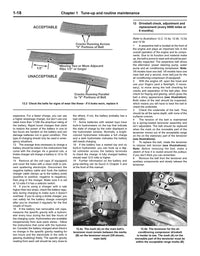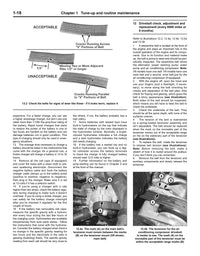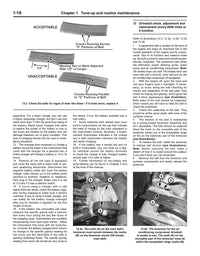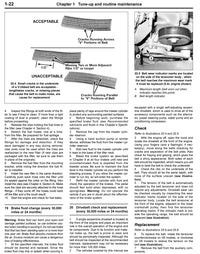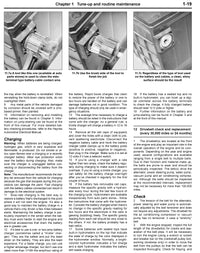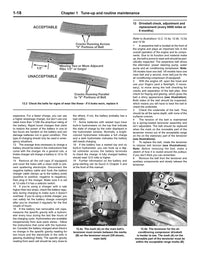The age-old question of how often to change motorcycle oil?
If you want to keep your engine well lubricated, run at the correct temperature, remove contaminants, ensure engine longevity, and get good performance and fuel economy, then you know this is one of your most important DIY tasks!
The answer for you and your specific motorcycle will ultimately come down to three factors:
- Your specific motorcycle's make and model (grab your DIY manual!)
- How frequently you ride your motorcycle, the conditions, and your usage
- What kind of engine oil you're utilizing
|
Riding Condition |
Indicative Oil Change Interval (Miles) |
Why it helps |
|
Short trips (under 5 miles) |
1,500–2,000 |
Lower risk of fuel/moisture dilution |
|
Stop-and-go traffic |
2,000–4,000 |
More frequent = avoid excessive wear |
|
Aggressive riding / Racing |
1,000–2,000 |
High RPM = fast oil breakdown |
|
Off-road / Dirt riding |
500–1,000 |
Contaminants + engine load |
|
Cold/Hot weather extremes |
Adjust viscosity, change sooner |
Seasonal-specific oil can help |
|
Infrequent / Seasonal use |
Yearly or pre/post storage |
Change even if unused because of oil degradation |
Specific factors that affect oil change intervals
Your specific engine type
-
Air-cooled engines (common in older or cruiser motorcycles) tend to run hotter and need more frequent oil changes.
-
Liquid-cooled engines are more thermally stable and might allow longer intervals.
Where, when, and how you like to ride
1. Stop-and-go traffic, short trips, or extreme temperatures accelerate oil degradation.
Why it matters
-
The engine may not reach full operating temperature, especially in cold weather.
-
Unburned fuel and moisture can accumulate in the oil, diluting it and accelerating degradation.
Oil change impact
-
Change 30–50% sooner than standard intervals.
-
Consider changing every 1,500–2,000 miles (2,400–3,200 km) for conventional oil if trips are consistently short.
2. Enjoy going off-road?
Why it matters
-
More contaminants like dust and mud can enter the oil, even with good filtration.
-
Engine and transmission endure more load variations and clutch abuse
Oil change impact
-
Consider an oil change every 500–1,000 miles (800–1,600 km) depending on how hard and often you ride. Clean or replace the air filter at the same time to avoid oil contamination from debris
3. High-performance riding can shorten intervals by 25–50%
Why it matters
-
Engine works harder, increasing heat, pressure, and shear forces on oil. Faster breakdown of oil's viscosity and protective additives.
Oil change impact
-
Change every 1,000–2,000 miles (1,600–3,200 km), even with synthetic oil. Track and performance riders should consider an oil analysis or follow race-spec maintenance intervals.
4. Weather Conditions
Cold Weather
-
Oil thickens in low temps, making it harder for the engine to circulate it efficiently at startup.
-
Moisture from condensation may not burn off properly.
Hot Weather
-
Thinner oil film under high heat increases engine wear unless high-temp-rated oil is used.
Oil change impact
-
Use oil with the correct viscosity for the season (e.g., 10W-40 in summer, 5W-30 in winter).
-
Stick to more frequent changes if your region has temperature extremes.
5. Seasonal or infrequent use
Why it matters
-
Oil degrades over time, even if mileage is low.
-
Moisture and acids can accumulate in the crankcase during long idle periods.
Oil change impact
-
Change oil before storage and again after 6–12 months of idle time.
Our tip: Always use fresh oil before riding season starts.
The type of oil you use
Mineral oil, semi-synthetic motor oil, and fully synthetic motor oil are the three most common types of engine oil. Different types of engine oil are needed for different bikes. Regardless of whether the oil is still fresh or not, the first thing you should do if you purchased a used bike is change the engine oil right away.

Motorcycle Oil Intervals
It is crucial to change the oil at the recommended intervals if you own a new or recently purchased motorcycle. The Haynes or Clymer service or repair manual for your bike makes these intervals clear.
Your engine depends on its engine oil to function. The proper engine oil will not only increase the lifespan of your engine but also improve the smoothness with which your bike operates. In fact, using the incorrect engine oil might be more detrimental than beneficial.
Oil Filter Condition
Always change the oil filter when you change the oil. A dirty filter limits oil flow and affects engine protection.
How does your motorcycle use its engine oil?
Oil is used for more than just lubricating moving engine parts. In addition, it cleans crucial internal parts of your engine to reduce accelerated wear and tear.
The motor oil is there every time you start the bike and rev the engine to lubricate, clean, and protect your engine from cold starts and extremely high temperatures.
Many people are unaware that motor oil, like engine coolant, is used to keep your engine cool. The combustion chamber's high temperatures are absorbed by oil, which lowers the motor's internal temperature.

So, how frequently should I change the oil on my motorcycle?
The type of oil used during the most recent oil change will determine this.
We believe engine oil ought to be changed at least every 2,000 miles if you’re using mineral-based motor oil, which is the least expensive and most straightforward type of engine oil on the market.
It is advisable to change the oil in a motorcycle engine that uses semi-synthetic motor oil every 5,000 to 6,000 miles.
The general recommendation for those who use fully synthetic motor oil is to change the oil every 7,000 to 10,000 miles. The price of synthetic motor oil is higher than that of mineral-based oils. However, full- and semi-synthetic motor oils will typically last longer, so you won't need to change them as frequently as expected.
It’s also best to change the oil in your bike at least twice a year if you don't ride it frequently.
Regardless of whether you use mineral, semi-synthetic, or fully synthetic oil, you will need to change your oil more frequently if you ride your bike frequently or over long distances every day.
Lastly, no matter the mileage, you should change the oil if you feel that it is dirty or that your engine is not operating as it should.
Ultimately, getting yourself a handy model-specific motorcycle manual will make all the difference in conducting a range of bike maintenance operations like this. Discover which Haynes or Clymer manual is best for you today!






